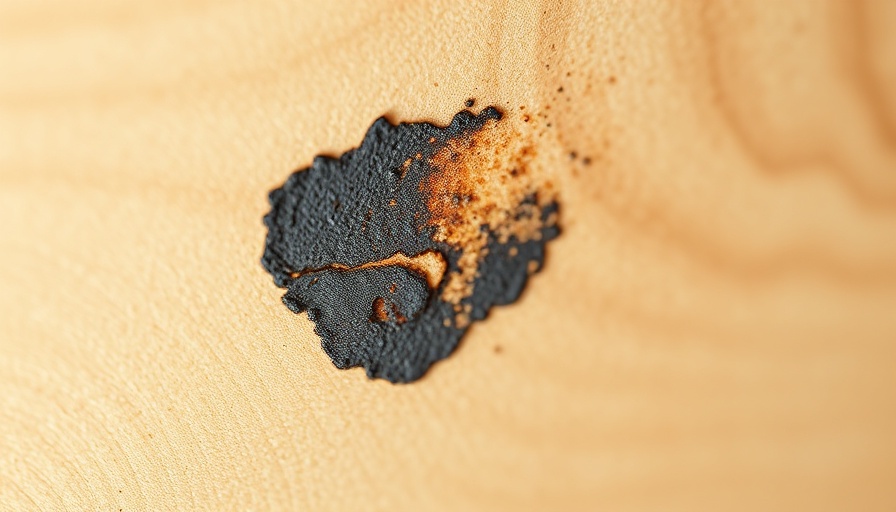
Understanding Black Rust Stains on Wood: The Science Behind the Discoloration
Black rust stains on wood surfaces can be a frustrating sight for homeowners, often arising from a chemical reaction between moisture, metal, and the tannins in wood. This reaction typically occurs when metallic objects—like cans or cast iron cookware—come into contact with damp wood. The iron in these metals reacts with the tannins naturally found in hardwoods such as oak and maple, causing a dark discoloration that can ruin the appearance of countertops, tables, or furniture.
The Effective Solution: Oxalic Acid as a Rust Remover
Lucky for us, tackling these unsightly stains doesn't have to mean expensive refinishing jobs or tedious sanding. Simple household products can often save the day. Utilizing oxalic acid, commonly found in cleaners like Bar Keepers Friend, presents a highly effective way to eliminate these stains while maintaining the integrity of the wood. This process not only restores the wood’s original beauty but does so with minimal effort—an aspect every homeowner appreciates.
Step-by-Step Guide to Removing Rust Stains from Wood
Here’s a streamlined approach to removing black rust stains without damaging your wood surfaces:
- **Prepare the Affected Area**: Start by thoroughly cleaning the stained area to remove any loose dirt or debris, allowing the treatment to work effectively.
- **Create Your Cleaning Paste**: Mix a small amount of Bar Keepers Friend powder, which contains oxalic acid, with warm water to form a spreadable paste. Make sure to wear gloves and protective eyewear during this process to prevent any chemical irritation.
- **Apply the Paste**: Use an old toothbrush to apply the paste directly to the stain. Spread it evenly, ensuring it completely covers the blackened area.
- **Allow It to Work**: Let the paste sit for around 15-30 minutes. If it begins to dry out, feel free to add a little water to keep it moist during this time.
- **Wipe Away Residue**: After the treatment period, use a damp cloth to wipe away the paste. You should notice significant discoloration reduction, sometimes nearly restoring the original look of the wood.
- **Repeat If Needed**: In case stubborn stains persist, you might need to repeat the process. Adjust the consistency of your paste by making it thicker for tougher spots.
- **Finishing Touches and Maintenance**: Finally, applying a coat of mineral oil or cutting board oil can help in restoring the shine and preventing future stains.
Lessons Learned: Preventing Future Stains
After tackling the removal of rust stains, it’s crucial to consider preventive measures. Using galvanized nails or maintaining a regular check on the wood can prevent these stains from occurring in the first place. Moreover, utilizing coasters under metal objects or keeping them dry can significantly reduce the risk of future stains.
Final Thoughts
Handling black rust stains on wood need not be an overwhelming task. By understanding the underlying chemistry and employing effective, straightforward techniques, homeowners can preserve the beauty of their wood surfaces with ease. Now that you are equipped with this knowledge, why not take a proactive step towards maintaining your home? The satisfaction of a well-maintained home can be yours with just a bit of elbow grease!
 Add Row
Add Row  Add
Add 






Write A Comment